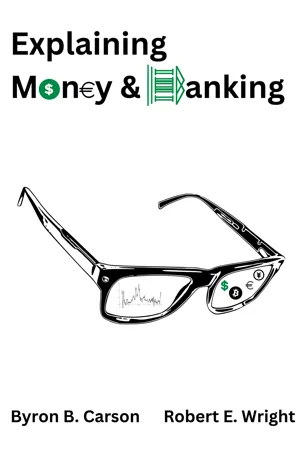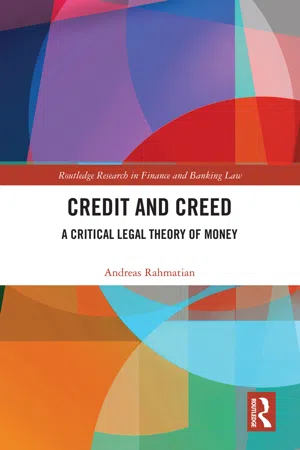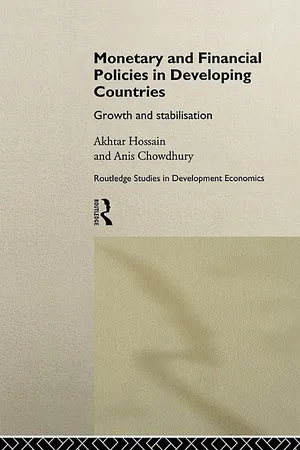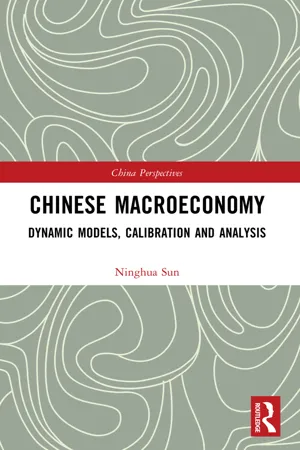Economics
Increase in Money Supply
Increase in money supply refers to the overall growth in the amount of money in circulation within an economy. This can occur through various means, such as central bank interventions, government fiscal policies, or changes in banking regulations. An increase in money supply can lead to inflation if the growth outpaces the production of goods and services in the economy.
Written by Perlego with AI-assistance
Related key terms
6 Key excerpts on "Increase in Money Supply"
- eBook - ePub
- Byron B. Carson, Robert E. Wright(Authors)
- 2023(Publication Date)
- Business Expert Press(Publisher)
PART IVThe Economics of Central Banking and Monetary PolicyPassage contains an image
CHAPTER 11The Money Supply Process and Money MultipliersOne of the most important facets of the banking system is how it creates money. The money creation process develops across multiple actors and choices within the banking system, which primarily includes banks—who act as lenders and as depository institutions—and economic entities (individual people, businesses, and governments)—who act as borrowers and as depositors. Central banks are another important actor in this process—as they attempt to use the tools of monetary policy to alter the money supply. While central banks often try to influence the money supply, for example, in response to crises like the Great Depression, the Great Recession, and COVID-19, we will now describe the economics of the money creation process, which means focusing on the choices economic entities make regarding the amount and type of money they wish to hold.Banks Create MoneyOur ultimate objective is to understand how individuals and banks influence the money supply. We need to define terms before we can adequately answer this question. The most important component of the money supply is the monetary base, MB. It equals the amount of currency (paper notes and coins) in circulation, C, and the total amount of reserves in the banking system, R. These components of MB depend on the choices economic entities make, for example, to borrow, to spend, to deposit, and so on, and the choices banks make, for example, to lend and accept deposits and hold reserves. Figure 11.1 shows how the amount of currency in circulation and bank reserves influence the monetary base and, ultimately, the money supply MS as measured by M1.Figure 11.1 U.S. money supply estimates, 1960 to 2020Source: FRED database using fredr.Increases (decreases) in MB lead to increases (decreases) in the MS. Moreover, the MS is larger than the MB, and changes in the MS do not always follow from changes in the MB - eBook - ePub
Credit and Creed
A Critical Legal Theory of Money
- Andreas Rahmatian(Author)
- 2019(Publication Date)
- Routledge(Publisher)
67 Crowther (1946: 47), Binswanger (2013: 40) and note 3. Binswanger (2009: 118), note 1. The German original is clearer than the English translation of Binswanger (2013: 40). There are further ways in which a bank can increase its cash holding, such as by selling secondary liquid assets, for example rediscountable bills and securities. A rise in demand of banknotes is often levelled out through the inter-banking clearing system because payments in and payments out tend to counterbalance over any one period.68 Binswanger (2013: 40) and note 3 with a quote from the dissertation (1977) of Binswanger’s well-known former PhD student, Josef Ackermann, CEO of the Deutsche Bank until 2012. See also Goodhart (2002: 233–234).The central bank can increase or reduce the quantity of money issued to the public.69 The money supply can be regulated or, more accurately, influenced by changing the quantity of reserves (purchase/sale of government bonds, lending of reserves to banks) or through changes of the reserve ratio of banks with the central bank. Economics textbooks still stress these interventions as principal regulatory measures for central banks.7069 Crowther (1946: 62). In the UK restrictions on the increase for the Bank of England by the Currency Act 1983, s. 2 (fiduciary note issue, i.e. the issue of banknotes is backed by securities deposited with the Bank of England by the government).70 E.g. Mankiw (2012: 632–635).It follows from the foregoing discussion that central bank money is also ‘credit’, both in relation to currency or cash (notes and coins) and in relation to central bank reserves. With regard to currency, the creditor is the holder of the banknote71 (which he may use to pay another debt), but the quality as credit has become academic because a meaningful discharge never occurs and is not even systemically intended. Nobody is entitled to repayment of the debt in gold or otherwise, and realistically the central bank cannot seek repayment from the ministry of finance or the state either (since the central bank’s cash debt/liability to the cash holder is ultimately a credit to the state, usually backed by securities deposited with the central bank).72 - Anis Chowdhury, Akhtar Hossain(Authors)
- 2003(Publication Date)
- Routledge(Publisher)
Chapter 5 that money supply affects real output only in the short run so long as there are rigidities in the system. On the other hand, there is overwhelming evidence showing that monetary expansion has been an important influence on inflation. Thus there is a broad consensus that the stability of the price level should be the ultimate goal of monetary policy.A MONEY MULTIPLIER MODEL OF THE MONEY SUPPLY PROCESS
This section specifies a simple model of the money supply process to examine the controllability of monetary aggregates in developing countries.1 The model is based on the fractional reserve system in which commercial banks are required by law to keep a fraction of their deposit liabilities as reserves with the central bank.Monetary aggregates can be defined either narrowly or broadly. The narrow money (M1) comprises currency in circulation (Cp) and demand deposits (Dd)The broadly defined money (M2) iswhere Dt=time or fixed deposits. Assuming that total deposits are divided into demand and time deposits in a fixed ratio (e), thenSubstitution of equation (6.3) in equation (6.2) yieldsWhile the currency held by the non-bank public (Cp) is the central bank’s liability, deposits (Dd and Dt) are the liabilities of commercial banks. Thus M1 and M2 represent the liabilities of the banking system and it is essential to examine the balance sheet of the banking system for an understanding of the process of money creation. The central banks balance sheet is given as- eBook - ePub
Chinese Macroeconomy
Dynamic Models, Calibration and Analysis
- Ninghua Sun(Author)
- 2022(Publication Date)
- Routledge(Publisher)
Figure 7.1 . Specifically, before 1992, the frequency and range of the two fluctuations were high; after 1992, the fluctuation range was much flatter and the fluctuations irregular. This fact demonstrates that the relationship between Chinese money supply and economic growth and fluctuations is worth studying.Figure 7.1Output and Money Supply Fluctuations from 1978 to 2010.Since the 1960s, it has been realized that money has had its own value. After a long period of experiment and research, economists have introduced monetary factors into the DSGE model, including mainly three models: First is the money-in-the-utility (MIU) model. Sidrauski (1967) proposed that holding money can increase the utility level of an economic person, so the money balance can be directly put into the utility function of the agent in the model. Sidrauski originally held that the amount of consumer goods and the amount of holding money determine the utility level of the economic agent. Later, economists extended it to include the leisure time owned by the economic agent. The marginal utility brought about by increasing the holding money includes two parts: One is the convenience of transactions; the other is that the real amount of money in the current period can increase available resources in the future. Since there is a certain substitution relationship between consumption and money, when the economic agent holds too much money, it will lead to a decline in the level of consumption. To achieve the goal of maximizing utility, the economic agent must choose between the amount of consumption and the real amount of holding money. Second is the cash-in-advance (CIA) model. Clower (1967) assumed that there was a certain form of transaction cost, and certain transactions must use money. Or, according to Kiyotaki and Wright (1989) , the acquisition of consumer goods required time and money, or in the case that goods obtained through barter had a time cost, so money was needed as a medium of exchange. Third is the overlapping-generation (OLG) model. Based on Samuelson (1958) - eBook - ePub
- W. Charles Sawyer, Richard L. Sprinkle(Authors)
- 2020(Publication Date)
- Routledge(Publisher)
In precise terms, the monetary base is: B = C + R A country’s money supply is equal to the monetary base multiplied by the banking money multiplier. The banking money multiplier is equal to 1 divided by the reserve requirement. In most countries, all depository institutions must keep a legal or required reserve on deposit at the central bank. This reserve requirement is an amount of funds equal to a specified percentage of its own deposits (r). For example, if the reserve requirement for banks is 10 percent, the money multiplier would be 10. Using these concepts, the money supply (MS) for a country becomes MS = B × 1 / r As a result, if the monetary base was $100 billion and r was.10, the money supply would be $1 trillion. 3 This relationship between the monetary base and the money supply is extremely important. When a central bank wants the money supply to change, it actually changes the monetary base or the money multiplier. The term printing money is literally equivalent to changing the amount of currency (C) contained in the monetary base. Printing money, however, is a relatively crude way to change the money supply within a country. In practice, governments or central banks can change the money supply by employing one of three tools. The first tool that a central bank can use to change the money supply is the discount rate. The discount rate is the interest rate that the central bank charges commercial banks for borrowing reserves. When a commercial bank borrows reserves from the central bank, the monetary base rises by an equal amount. Given the money multiplier, as the total reserves of the banking system increase, the money supply increases by a multiple of that amount. When a central bank lowers the discount rate, commercial banks tend to borrow more from the central bank and bank reserves rise and the money supply rises. The reverse occurs if the discount rate is increased. However, using the discount rate to control the money supply is not very precise - Richard Coghlan(Author)
- 2014(Publication Date)
- Routledge(Publisher)
directly determined by the authorities, but has resulted from behavioural interrelationships between all sectors of the economy — including the overseas sector if, as argued above, there is substitution between domestic and external finance. To take DCE as exogenous ignores the channels through which control may be exercised, and the problems involved. If these questions are ignored, not only does the analysis become rather sterile, in the sense that it does injustice to the institutional structure, but it abstracts from important political-economic decisions, and is incapable of analysing the real policy choices facing the authorities.We turn now to consider increases in the money supply resulting from an expansion of domestic credit. One possible use of new credit is the purchase of existing assets. In that case disequilibrium between the demand for and supply of money could persist for some time, but without resulting in substantial external flows. For example, if the new credit is demanded because of an increase in the demand for housing, relative returns and income/expenditure may be slow to change. Because of uncertainty and imperfect information and markets, an excess supply of money may exist under such circumstances without causing a balance of payments outflow. In fact the balance of payments may only respond as the disequilibrium is transmitted to other markets.Suppose, on the other hand, that new money is spent in such a way that it leads to an increase in the demand for money. It is even possible that if the money, the new credit, is spent on increasing wage payments, for example, then demand might actually increase to the same extent as supply. But that does not mean there will be no repercussions on the balance of payments. As the increase in income is spent some will flow abroad, thereby reducing the supply of money, income and consequently the demand for money. All will be moving together; the fact that balance of payments equilibrium requires money market equilibrium is irrelevant to the process of adjustment. (We are back with Tsiang's observation of simultaneous adjustment.) It should be clear from these examples that there is no necessary connection between balance of payments disequilibrium and inequality between the demand for and supply of money.
Index pages curate the most relevant extracts from our library of academic textbooks. They’ve been created using an in-house natural language model (NLM), each adding context and meaning to key research topics.





